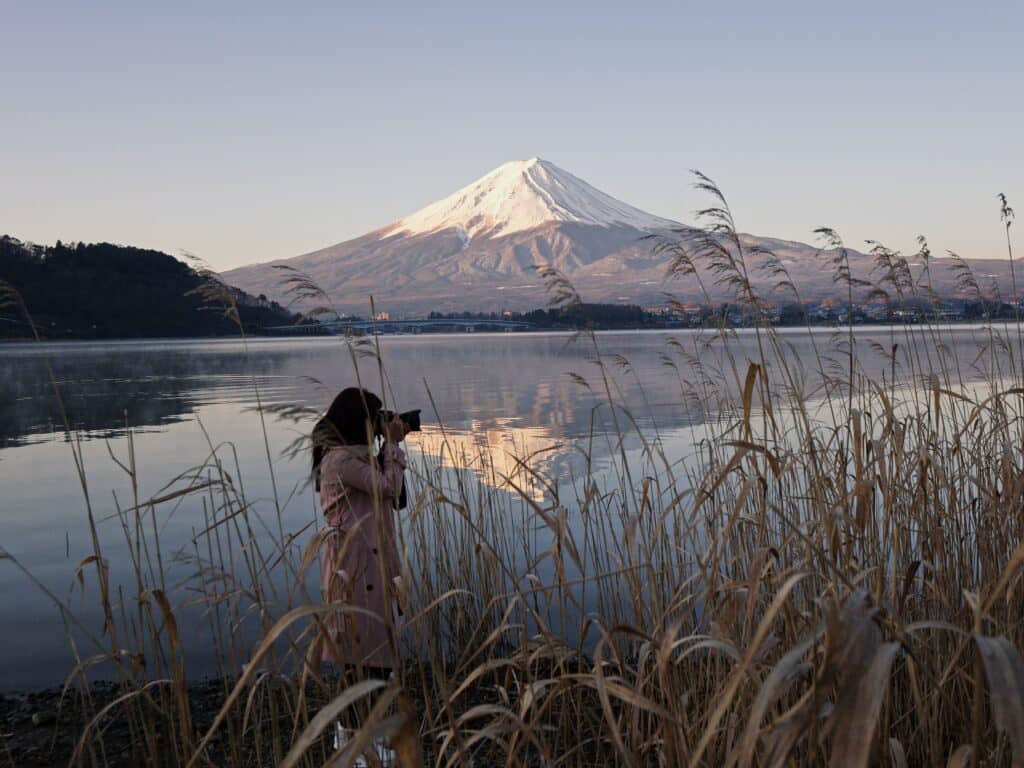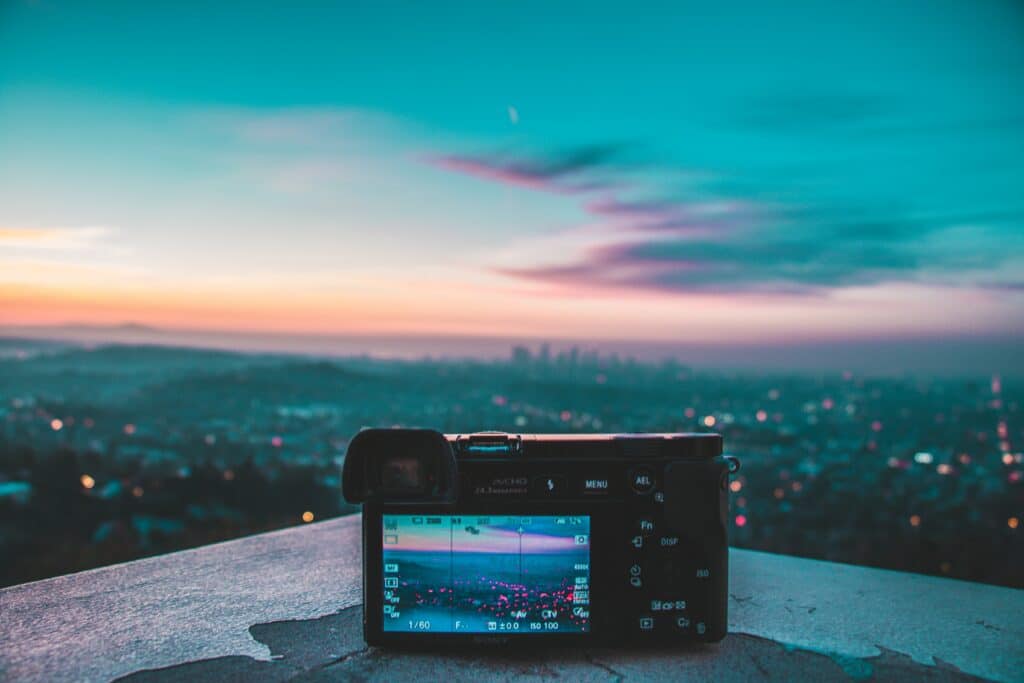In photography, the notion of travel often conjures up images of shutterbugs journeying to the far corners of the Earth, capturing majestic landscapes, vibrant cultures, and extraordinary moments that escape the ordinary eye.
This perception raises a compelling question: Do photographers travel a lot?
As one might expect, the answer is nuanced, largely on the type of photography they pursue. This article delves into the captivating world of photography, exploring the extent to which travel forms a part of their professional journeys.

Related: How Much Do Travel Photographers Make?
Factors Influencing Travel Frequency for Photographers
Niche and Specialization
Specific genres within photography inherently demand extensive travel. Wildlife photographers, for instance, often find themselves traversing the globe to capture unique ecosystems and elusive species. Similarly, adventure and documentary photographers are drawn towards the unfamiliar, embarking on extraordinary journeys to document human endeavors or chronicle compelling stories from remote corners of the world.
The dichotomy between studio-based and location-driven photography also impacts travel frequency. While studio photographers can work in a controlled environment, photographers focusing on location shoots must often travel to their subjects, whether architectural wonders or bustling cityscapes.
Geographic Location
Proximity to diverse landscapes and cultural settings: The location where a photographer is based can significantly dictate their travel patterns. Those fortunate enough to reside near diverse landscapes or rich cultural hubs may find ample photographic opportunities on their doorstep, reducing the need for extensive travel.
Opportunities for local and international travel: Nevertheless, photographers based in more homogeneous or remote locations may need to travel more, both locally and internationally, to diversify their portfolio and cater to various client needs.
Clientele and Market Demands
Sometimes, clientele demands can necessitate travel. Clients may request location-specific shoots, urging photographers to journey to selected sites to meet their vision.
In the era of globalization, photographers increasingly cater to a worldwide clientele. This landscape can compel photographers to travel internationally, bridging geographical divides to meet clients’ diverse and evolving preferences across the globe.
Do Photographers Travel A Lot?
Types of Photographers

Photographers come in many different forms, each with unique travel levels.
- Travel Photographers: As the name suggests, travel photographers travel extensively, capturing the essence of different places, cultures, and experiences. Their work often involves significant journeying, spanning various countries and continents.
- Wildlife Photographers: Wildlife photographers venture into natural habitats, often traversing remote and challenging terrain to capture stunning images of flora and fauna. The degree of travel depends on the types of environments they specialize in.
- Wedding Photographers: Generally, wedding photographers may not travel as extensively as travel or wildlife photographers. They usually operate within a specific region, although some high-profile photographers may be hired for destination weddings, necessitating travel.
- Portrait Photographers: These photographers work in studios and their clients’ locations. The level of travel involved is relatively lower.
- Commercial Photographers: Commercial photographers capture images for commercial use, such as advertising or product photography. Their need to travel broadly depends on the assignment and client requirements.
- Sports Photographers: These photographers cover sporting events, and sporting schedules and locations dictate their travel frequency.
Each photographer’s travel requirements are thus dictated by their specialization and the demands of their profession.
Travel-Enhancing Factors in Photography

Creative Inspiration
Travel allows photographers to immerse themselves in new environments, which can spark creativity and inspire fresh perspectives. The unfamiliar surroundings, people, and cultures encountered during travel can serve as a rich source of ideas, stimulating a photographer’s creative process and pushing the boundaries of their artistry.
Travel also allows photographers to translate their cultural experiences into visual storytelling. By capturing the essence of diverse cultures, traditions, and lifestyles, photographers can tell compelling stories through their lenses, enriching their work with depth, context, and human connection.
Building a Diverse Portfolio
Travel enables photographers to showcase various locations and subjects in their portfolios. From bustling cityscapes and tranquil landscapes to vibrant festivals and intimate portraits, travel broadens the scope of a photographer’s work, demonstrating their versatility and adaptability.
A diverse portfolio, enriched by travel, can attract a broader spectrum of clients. By showcasing their ability to capture various subjects across various locations, photographers can appeal to clients with varied preferences and needs, expanding their market reach and enhancing their professional opportunities.
Can You Travel the World as a Photographer?

Indeed, the profession of photography can provide an extraordinary passport to exploring the globe. Many photographers, particularly in travel, nature, and documentary photography, often embark on worldwide journeys as an integral aspect of their work.
These global voyages allow them to capture a tapestry of landscapes, cultures, and experiences, enriching their portfolios with diverse imagery.
However, it’s essential to note that world travel as a photographer requires a blend of passion, adaptability, and resilience. It’s not just about visiting exotic locales and clicking buttons on a camera.
The unpredictability of weather conditions, the challenge of capturing the right light, the patience needed in wildlife photography, and the cultural sensitivity required in locations worldwide are all part of this profession’s reality.
Furthermore, travel photographers must also navigate logistical aspects, including securing travel documentation, managing budgets, and arranging accommodations across various countries and continents.
Despite its challenges, the opportunity to witness the world’s beauty and diversity firsthand, creating visual narratives that resonate with viewers globally, makes the journey rewarding and fulfilling for many photographers.
Future Trends in Travel Photography and Travel Frequency

Sustainable Travel Practices
With the growing awareness about ethical and sustainable practices, photographers are becoming more conscious about their actions during their travels.
This includes respecting local customs and traditions, seeking consent before taking photographs of people, and practicing a ‘leave no trace’ philosophy.
Ethical considerations in photography can promote a more sensitive and respectful approach to capturing and sharing images from different cultures and environments.
Sustainable travel practices encourage photographers to be mindful of their carbon footprint, promote local economies, and respect the places and communities they visit, thereby preserving these locales for future generations.
Virtual Reality and Remote Photography
Technological advancements are reshaping the photography industry with innovations in remote image capture and virtual experiences.
Using drones, photographers can now capture stunning aerial views without physically traveling to the location. Meanwhile, Virtual Reality (VR) offers immersive photographic experiences, allowing audiences to explore distant places or inaccessible terrains from their homes, transforming how we perceive and interact with photographs.
These innovations could significantly impact traditional travel photography practices. While some fear it may reduce the need for physical travel, others argue it could democratize photography, making it more accessible and inclusive.
Regardless, it is undeniable that as technology evolves, so will the practices of travel photography, offering exciting possibilities for photographers to capture and share their world vision.
Conclusion
Photography is a dynamic and evolving field with travel as a crucial element, particularly for those in specific specializations. For photographers, travel can be a source of inspiration, a means to enhance their portfolio, and an opportunity to encounter and document the world’s diversity.
However, amidst the allure of new experiences and landscapes, the importance of sustainable and respectful practices should not be overlooked.
As technology continues to revolutionize photography and virtual and remote photography become more prevalent, the future of travel for photographers remains intriguing.
While these advancements might alter the frequency or nature of their travel, the essence of photography—capturing moments, telling stories, and evoking emotions—will continue to drive photographers to explore the world, physically or virtually, and share their unique visions.